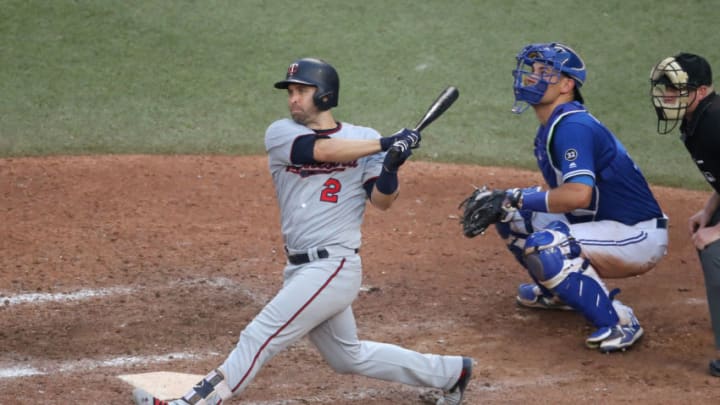
No. 4: Brian Dozier
Years: 2012-2018 (7 Seasons)
Key Stats: 955 G, 167 HR, 491 RBI, 98 SB, .248 BA, 22.7 WAR, 2.3 dWAR, One time All-Star, One Gold Glove, Three Top-25 MVP Finishes
Brian Dozier is the most recent player on this list by far, still being an active Major League Baseball player. Dozier played seven seasons for the Minnesota Twins during a time when the team was losing a lot of games. He provided more offense than the rest of the roster at times, making him invaluable.
Dozier was the star of the franchise from 2014 to 2017, hitting at least 23 home runs, topping out at 42 in 2016. He didn’t hit for average, with a .271 average ending up as his best season, but his consistent home run ability kept fans engaged while the franchise was lagging behind. He even had a bit of speed too, swiping 98 bags in a Twins uniform.
His defense was solid too, as he built up a 2.3 dWAR and one a Gold Glove in 2017. His fielding percentage of .987 is pretty good for a second baseman, and he showed how talented he was with some really impressive plays during his time here:
He didn’t win a lot of awards, only making one all-star team and the single Gold Glove, but he finished in the Top 25 of MVP voting three separate times. Despite that, his WAR of 22.7 shows how much talent he had and how much he meant to the team.
Dozier always meant a lot to the fan base as well, making the franchise respectable. He wanted to stay in Minnesota as well, but the team decided against paying what he was looking for and sent him off for Luke Raley, Logan Forsythe, and Devin Smeltzer.
Raley helped the Twins land Kenta Maeda, and Smeltzer gave the Twins valuable innings down the stretch, meaning Dozier still offered the team value when he was gone. He was an excellent player and earned his spot at No. 4.
